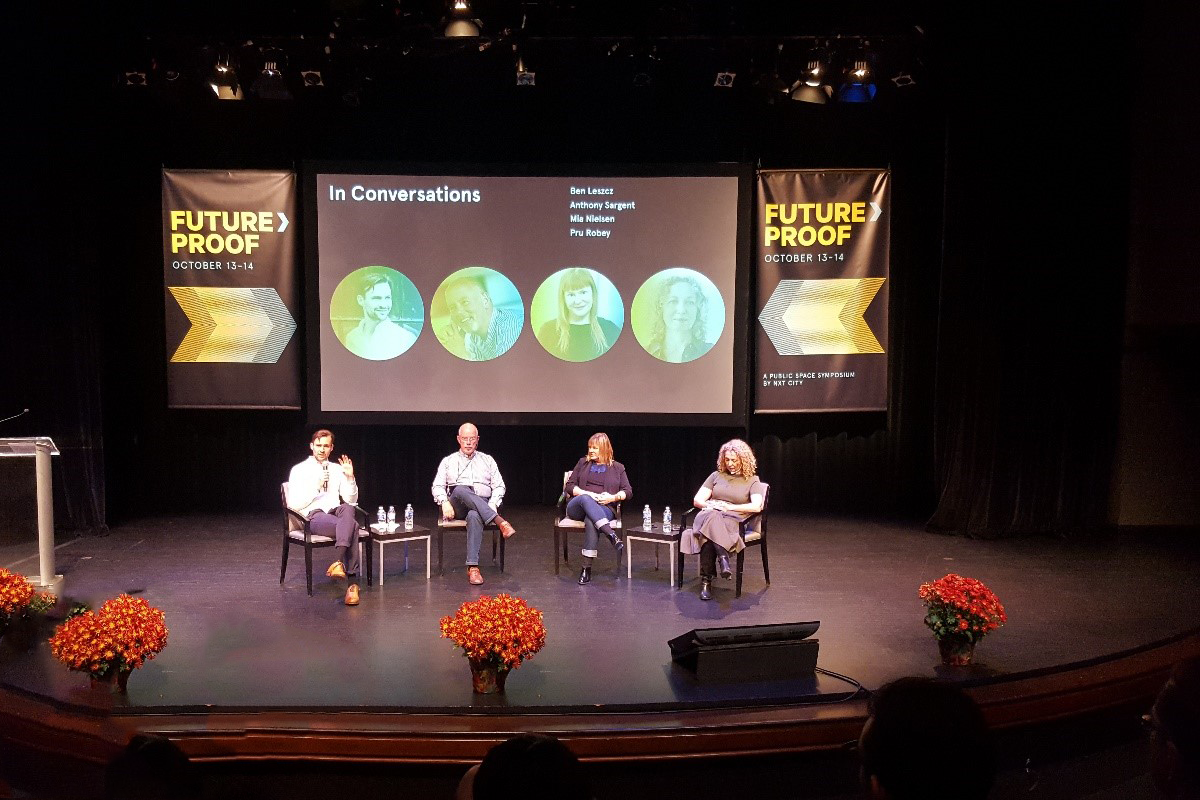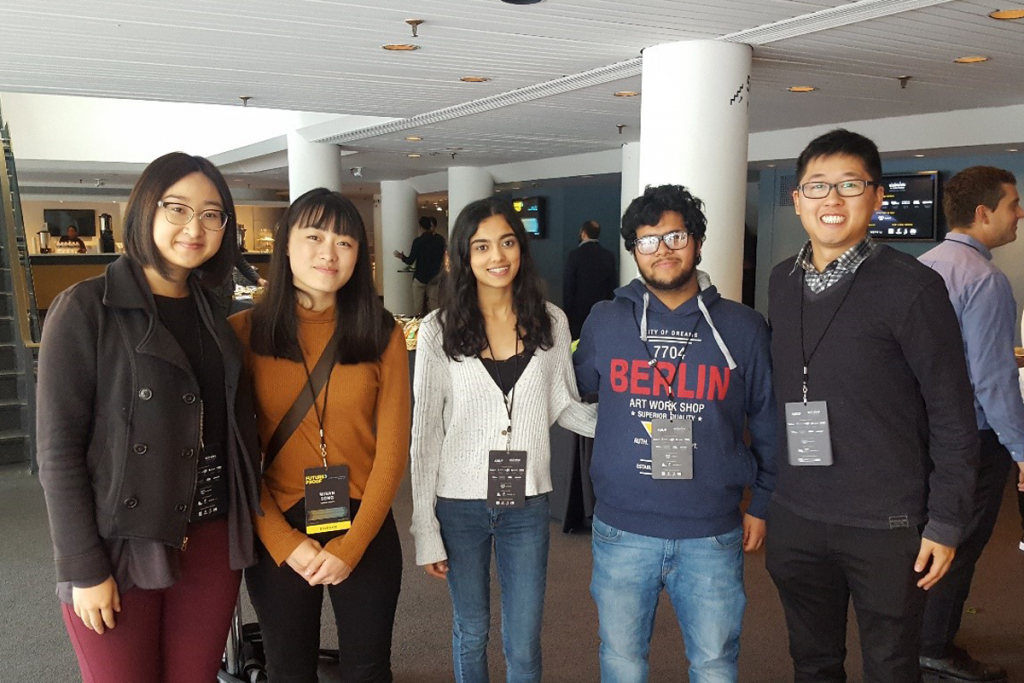
02 Nov Bringing the Next Generation to NXT Symposium
A couple of months ago, my colleague David wrote a thought-provoking post about using conferences as a tool to break down silos. While David was referring to (and was rightfully frustrated about) the echo chambers and invisible walls that urban planning conferences tend to create, I wanted to focus on another type of barrier: age.
As you could probably tell by our name, we’re all about bringing people of all ages and generations into the conversation about cities. So when we got the invitation to NXT City’s Future: Proof Symposium this year, we wanted to try something different.

Mayor John Tory speaking about the importance of public space in a growing city like Toronto
First, a little bit about NXT City – NXT City is a not-for-profit organization that connects young leaders with city builders to create, activate and program public spaces. The symposium itself was a great event that brought together planners, architects, designers, journalists, artists, and computer technologists (there you go, David) from around the world to talk about public spaces in our cities. Our founder, Gil Penalosa, was the closing keynote speaker at last year’s event.
Now, what was it that we tried to do? With the generous support of the NXT City team, our partner organization Urban Minds offered free tickets to the symposium to students 18 or under. While university students often attend similar conferences, this was a rare opportunity for a younger audience to participate.
We weren’t sure what to expect. This could either be an eye-opening and inspiring experience, or be a complete snooze fest for the students. We asked the students how it went, and here’s what one of our youth delegates told us.

“Future Proof Symposium was a thoroughly engaging event. Asides from the impressive list of speakers, I felt that the ideas and conversations that were explored were not only diverse in topics but focused on innovative concepts for the future of the cities we live in. A conversation that I found especially interesting was Alan Miller’s keynote on UK’s Nightlife and the economic, social, and cultural impact of embracing the nightlife in cities, followed by a conversation with John Tory and Dwight Drummond. This conversation introduced me to the compelling notion of a “24/7 City”, and was especially interesting to listen to how this initiative could be implemented into Toronto’s city life. Being at this event truly opened my eyes to the exciting future of cities, and the new paths that we must take to get there.” (Minan, 18)
Since our current education system doesn’t adequately cover urban issues at the secondary school level, we hope these types of conferences can expose youth to new ideas and questions. This way, we are building up informed and engaged citizens, and generating more interest in city building among younger generations.
By attending these planning conferences, the students’ presence will also serve as a reminder to planners and other city builders to engage with young people who aren’t usually at the table simply because of their age or the life stage they are in.
As planners, our job is to plan for the future of our cities, so why don’t we start a meaningful dialogue with the next generation who will live that future?



